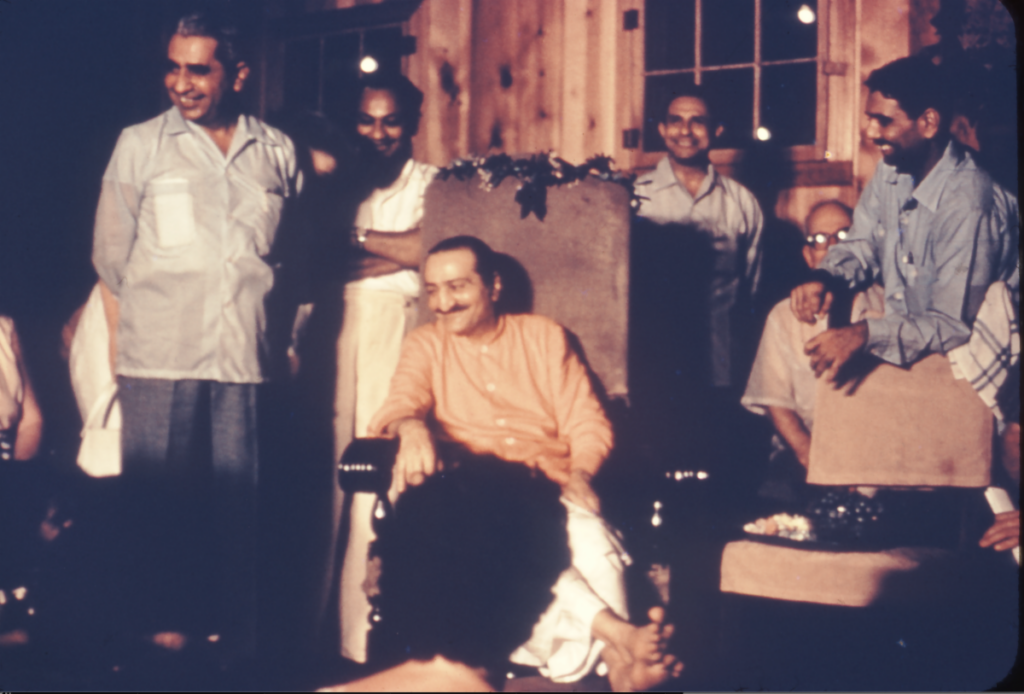
July 31, 2020
The Yellow Chair
As she approached the end of a rare interview on January 31, 1977, Elizabeth Patterson remarked, “I don’t know if I have time to tell, but there’s a very beautiful story.” It was a story about a yellow chair, a big, beautiful, high-backed Italian chair that has sat in the Barn at Meher Center for over sixty years.
Before it came to the Center, Elizabeth began, the chair had belonged to Princess Norina Matchabelli — a fellow disciple of Meher Baba’s, and Elizabeth’s partner in finding and developing the Center. In the early 1940’s, Norina was living with Elizabeth and Nadine Tolstoy in New York City, and giving talks about Meher Baba and His messages that were many people’s first introduction to Him. She felt that it was important to use a special chair during these talks, and she chose the yellow one.
This wasn’t as easy as it sounded. The chair was large and heavy, and Norina’s talks happened all over the city. Darwin Shaw, another early disciple of Meher Baba’s, was asked to do the introductions to the talks when he was in New York; in addition, he was sometimes tasked with trying to shepherd the massive chair across town. He writes about standing next to it on the bustling New York sidewalks, waiting for a big enough taxi to happen by.
Norina continued the talks throughout the 1940’s, and also made frequent trips to Myrtle Beach, working diligently with Elizabeth to prepare for Baba’s long-hoped-for visit: it was she who determined where most of the cabins were placed; that the paths should be kept raked; that the rafters of the Barn should be painted Mediterranean blue. By 1952, when Baba finally arrived, the talks had ended, the chair had been brought to Myrtle Beach for safekeeping, and the Center was beautiful and ready. But by that time, Norina had developed severe medical conditions which prevented her from being near Baba for much of His visit, or His subsequent visit in 1956.
When Baba first walked into the Barn on that second trip in 1956, Elizabeth recalled Him turning to look at her. “But where is Baba going to sit?” He asked. Elizabeth motioned to all the chairs. “Well any of these chairs, of course, you choose!” Baba nodded. He walked over to one of the chairs and tried it, but gestured that it was too hard. He tried another one, but gestured that it was too soft. Then He said, “Now, think, Elizabeth.” She thought suddenly of the carved yellow chair, mentioned it to Baba. He said to send for it; she did, and Baba sat on it. Immediately, He said, “Oh, this is just right.” Baba used the chair over the course of that visit, and His final visit in 1958.
When you enter the Barn today, the chair is still there, and for many, it feels like Baba is still there too, ensconced in it, beaming — like He did over the years as He watched dancers put on the performance of their lives; laughed heartily at an off-color joke; discoursed about the nature of consciousness; welcomed a newcomer with open arms and sparkling eyes. It still seems to carry His presence, and when the Center is open, on a long afternoon, during a walk down a sunlit path, you might stop by the Barn to see someone still sitting there, quietly, with their Beloved.
But what inspired Elizabeth to fit the story into her 1977 interview, as time was running out, were not the decades that Baba has made Himself available from that yellow upholstered seat. It was one specific act of thoughtfulness, the kind that is almost imperceptible to others, but that so many people who spent time with Baba can tell you their own version of. Norina loved Baba, and many of those who would fill the Barn, under those Mediterranean blue rafters, had first heard of Him through her. And in spite of being out of Baba’s presence when her work was consummated, she was not out of His mind. As Elizabeth put it, “I don’t think He wanted it just because it was just right … I’m sure He wanted something of hers to be there and so that’s why He wanted that chair.” And that symbol of His love, totally personal and completely infinite, still waits there today for every lover who enters.